Ever since my Mom took me to see my first movie (Mary Poppins) when I was six years old, I’ve been hooked on films. And not just films but also the music created for films too. I have a vast collection of movie soundtracks on both cd and vinyl. I love to play them just as much for the music as I do for the memories they bring back of each film.
While many movies today use pop/rock songs for their scores, it’s the instrumental scores created for films that remain my favorite type of soundtrack.
Listed below in alphabetical order are what I believe are 25 great film scores (and trust me, I could’ve easily made the list a lot longer). I didn’t design this list to be definitive, but simply as a starting point to help readers discover what I think are some of the best instrumental film scores created for movies.
Whether your favorite format is vinyl, cd, or streaming, I hope you’ll give these film scores a listen…
1. A River Runs Through It
Mark Isham’s Oscar nominated score for Robert Redford’s film, A River Runs Through It, combines strings, woodwinds and occasionally brass, harps, piano, and bagpipes to create understated music motifs that evoke the reflective, natural beauty of the Montana landscape. At various points in the score, Isham incorporates a fiddle and flute to help suggest the time period of the early twentieth century, which is when the story takes place. Period jazz and pop songs from the time period are also incorporated into the score. The result is a lyrical, calming score that flows through the film like the river prominently featured in the movie. This is one of my favorite soundtracks to listen to after a hard day at the office.
Other great Mark Isham film scores: Blade, The Moderns, Never Cry Wolf
2. Blade Runner
Although it originally bombed in its theatrical release, today Ridley Scott’s Blade Runner is widely considered to be one of the best science fiction films of all time.
In my opinion, the film wouldn’t work without the brilliant score by Vangelis. The score’s layered sounds were created by an array of synthesizers (particularly the Yamaha CS-80) and the ambient textures create a haunting, futuristic atmosphere that blends the romantic melancholy of film noir with a feeling of decay. Vangelis also infuses some of his synthesized melodies with Middle Eastern influences too.
Vangelis didn’t read music, so the entire score was improvised while he watched the movie. In addition, Vangelis added subtle sounds and melodic riffs in scenes without music, interspersing them throughout the film. The result is a lot of great music that’s fully integrated with the visuals of the film. Other great Vangelis film scores: Antarctica, Chariots of Fire, Missing
3. Chinatown
One of the best film composers of all time, Jerry Goldsmith’s score for Chinatown, is an aural masterpiece. The main title music evokes classic Hollywood with its melancholic solo trumpet, which also is used in the film’s love theme. Goldsmith came up with an unusual mix of instruments to record his score: strings, 4 different pianos, 4 harps, a guiro, and only one trumpet. Often, the strings on the piano are brushed, creating an unusual effect; in other places, Goldsmith uses the lower keys of the piano to create tension and suspense.
The result is a score that sounds nostalgic yet also has a 70s musical sensibility too. Interestingly, Goldsmith only had 10 days to compose and record the score because he was hired after the original composer, Phillip Lambro, was fired. The audience at a sneak preview for the film all hated Lambro’s music, so producer Robert Evans took matters into his own hands. Interestingly, snippets of Lambro’s original score can still be heard on the soundtrack to the film’s coming attraction trailer.
Other great Jerry Goldsmith Scores: Alien, Islands in The Stream, and Patton
4. Contempt (Les Mepris)
Perhaps the best known film composer from France, Georges Delerue’s lush score for Jean-luc Godard’s masterpiece, Contempt (or Le Mépris in French) combines European romanticism juxtaposed against minor chord harmonies that evoke both sadness and alienation. With his background in classical music, Delerue was able to combine orchestral strings with sharp brass tones, and heavily charged pauses, along with a despairing melody to create a beautiful yet haunting score. You’ll probably recognize “Theme de Camille” since since it has been used in many later films, including Martin Scorsese’s Casino.
Other great Georges Delerue film scores: A Little Romance, Jules and Jim, Platoon
5. The Godfather/The Godfather Part Two
Although the Italian composer, Nino Rota, scored all of Fellini’s films until Rota’s death in 1979, the music Rota will always be remembered for are his haunting themes for The Godfather and The Godfather Part Two. With a trumpet playing the haunting minor-key main theme, Rota created music for one of the most recognizable main themes of any film, matched only by the beautiful minor-key Godfather waltz.
These two iconic themes, along with the other music created for both films, are memorable for their melancholic beauty. I also love the way Rota incorporates Italian folk songs into the score too, which gives the music an authentic flavor. To me, the two scores, just like the two films, are inseparable, which is why I’ve listed both of them together here.
Other great Nino Rota scores: 8 and 1/2, Rocco and His Brothers, Romeo and Juliet
6. The Good, The Bad, And The Ugly
In the mid-1960s, Ennio Morricone revolutionized traditional film scores by boldly incorporating an electric guitar with a full orchestra. And not just that, Morricone also added vocalizations (non lyric singing), whistles, the sound of a whip and more to create this legendary film score. In addition, the famous main theme is addictively hummable, which makes it instantly memorable. Combined with director Sergio Leone’s brilliant visuals, Morricone created an operatic score of tension and drama that would only be outdone two years later by their brilliant collaboration on Once Upon a Time in the West.
Other great Morricone film scores: The Mission, Once Upon a Time in America
7. In The Mood For Love
It’s not often that two composers collaborate together to create a film score, but for Wong Kar-Wai’s masterpiece, In The Mood For Love, Michael Galasso and Shigeru Umebayashi created deeply evocative music that captures the pent up feelings of both main characters in the film. The recurring, bittersweet melodies, especially the haunting main theme in 3/4 time, echo the film’s themes of longing and missed connections. Throughout the film, the two composers use minimalistic instrumentation to create music that’s romantic yet full of painful longing.
For the final scene set in the Angkor Wat temple complex in Siem Reap, Cambodia, they have a sad sounding cello play the melody and use a three note plucked string motif to support it. The result is one of the most romantic scores ever written for a film.
Other great Galasso and Umebayashi film scores: 2046, Chunking Express
8. Jaws
John Williams’ two note motif (played on cellos) scared me to death when I first saw Jaws in a dark movie theater back in 1975. In the film, we first hear the two notes; then the motif repeats and quickly builds to the main theme of the movie. Its simplicity is deceptive: the relentless, rhythmic build-up instills a visceral sense of impending danger, until it explodes during the final climax of the film. Jaws was the first John Williams’ score I ever heard, and it’s still one that makes me nervous every time I hear it today.
Other great John Williams film scores: E.T., Close Encounters, Superman
9. Koyaanisqatsi
There has never been a film quite like Koyaanisqatsi (which means life out of balance in the Native American Hopi language). A hard to classify movie, Godfrey Reggio’s film is about man’s disconnection from nature and the consequences of unchecked technological advancement. In short, it’s an indictment of today’s society. Philip Glass’s minimalist score is integral to the film’s meditation on modern life.
Beginning with the slow-paced chanting of the Hopi Native American word (and title of the film) “koyaanisqatsi,” the score, like the movie, slowly builds to loud, jarring, fast, repetitive rhythmic patterns using an array of synthesized sounds. The repetitive patterns and gradual evolutions in the music work in conjunction with the striking visuals, evoking a hypnotic reflection on nature’s disruption by technology and civilization. The result is an amazing and overwhelming sensory experience, especially if you see the film in a theater.
Other great Philip Glass film scores: The Hours, Kundun, Mishima
10. Lawrence of Arabia
Featuring one of the most famous main film themes ever created, Maurice Jarre’s Oscar-winning score for Lawrence of Arabia is epic in every way. Its sweeping themes and powerful orchestrations capture the vast, sun-drenched desert landscapes. In contrast, the softer parts of the film score probe the inner conflicts of its characters. Interestingly, Jarre incorporates traditional Middle-Eastern percussion instruments into the score, such as a cithera and Onde Martenot, to help give the music a Middle-Eastern flavor.
For the orchestral arrangements, Jarre relied on using tritone harmony, which makes the music sound expansive, especially for the music cues set to images in the desert. In my opinion, Jarre has created the perfect score for a cinematic epic.
Other great Maurice Jarre film scores: Dr. Zhivago, Grand Prix, Jacob’s Ladder
11. Local Hero
Only a few rock musicians have successfully made the transition from writing songs to writing great film scores. Thankfully, Mark Knopfler, the creative force behind the band Dire Straits, is one of them. Knopfler’s score for Local Hero draws upon his experience in the band, especially with the sound and style of their album, Love Over Gold. Yet, Knopfler also combines his electric guitar sound with folk and ambient sounds to create gentle melodies and understated textures that recall both the quaint charm of a small Scottish village and a sense of wistful nostalgia. Knopfler’s music for Local Hero not only provides Bill Forsyth’s charming film with a great score, it also works on its own as a great soundtrack album as well.
Other great Mark Knopfler film scores: Cal, Comfort and Joy, The Princess Bride.
12. The Lord of The Rings
When Howard Shore signed on to compose the scores for Peter Jackson’s three part trilogy of Lord of the Rings, did he know he would have to compose over 12 hours of music? The result is a monumental work of thematic material full of leitmotifs that are combined and expanded in different ways to represent the cultures, characters, and epic events, of each film. Shore does an excellent job of musically unifying J. R.R. Tolkien’s sprawling epic by giving each major character their own theme while enhancing the mythic, immersive quality of Middle-earth with multi-layered orchestration and choral elements. The result is some of the best film music of our modern era.
Other great Howard Shore film scores: Dead Ringers, The Fly, Seven, Videodrome.
13. Merry Christmas, Mr. Lawrence
I’m not sure, but I think Ryuichi Sakamoto may be the only composer in cinematic history to compose a film score and act in a co-starring role for the same movie. You see, in Merry Christmas, Mr. Lawrence, Sakamoto not only composed and performed the film’s score, he also portrayed Captain Yonio in the film.
Another rare example of a rock musician who made the transition to film composer, Sakamoto’s score for Merry Christmas, Mr. Lawrence blends Eastern musical sensibilities with the Western classical tradition. With its unusual harmonic patterns and haunting piano themes, especially the famous main title, Sakamoto has created one one of the most original and distinct film scores in film history.
Other great Sakamoto film scores: High Heels, The Last Emperor, Minamata
14. The Natural
A successful singer-songwriter, Randy Newman also made the transition from pop musician to film composer with his score for the movie, Ragtime. For his second film score, Randy Newman’s music for The Natural channels a nostalgic Americana by creating Aaron-Copland like orchestral themes to great effect. With this beautiful score, Newman successfully captures the romantic mythology of baseball. In addition, Newman’s warm melodies help give the film an enduring sense of hope and timeless grace.
Other great Randy Newman film scores: Avalon, Pleasantville, Seabiscuit.
15. Once Upon a Time In The West
Once again, the great film composer Ennio Morricone demonstrates his genius with this magnificent film score for Sergio Leone’s Once Upon a Time In The West. Here, Morricone builds on the techniques he used in his earlier score for The Good, The Bad, and The Ugly through his inventive use of vocalizations, a searing electric guitar, and by adding a haunting harmonica that directly ties into the story of the film. By crafting themes that are both cinematic and deeply emotional, Morricone elevates Leone’s film into a great operatic Spaghetti western.
Other great Morricone scores: Bugsy, Days of Heaven, The Untouchables.
16. Out of Africa
John Barry’s sweeping orchestral score for Out of Africa is known for its romantic and lush themes. The music’s lyrical melodies and rich orchestrations combine brass fanfares with slow, refined strings, woodwinds, and flutes to capture the emotional love story between Meryl Streep’s Karen Dinesen and Robert Redford’s Denys Finch Hatton at the core of this film. This is a score that can be heard and appreciated without ever seeing the film, but when combined with the images on the screen, John Barry’s music elevates Out of Africa to a higher level of cinema.
Other great Barry film scores: Body Heat, Dances With Wolves, King Kong (1976)
17. Paris, Texas
After he was blinded in one eye, Ry Cooder began spending time in seclusion learning how to play the guitar. Eventually, Cooder became a highly sought after session musician and later a solo artist. When approached by film director Wim Wenders to write the score for his film, Paris, Texas, Cooder accepted the challenge. The result is an atmospheric score that relies on a sparse, slide-guitar-driven sound that creates a haunting sense of loneliness which complements the film’s themes of isolation, redemption, and rediscovery.
Other great Cooder film scores: Alamo Bay, Southern Comfort, The Long Riders
18. Planet of the Apes
Jerry Goldsmith’s music for the original Planet of the Apes movie is quite different from his other film scores. For one thing, Goldsmith took his inspiration from modern classical composers such as Bartok and Stravinsky. Goldsmith also incorporated many unusual elements to make his original score both innovative and unsettling to listeners. First, he looped drums into an echoplex; then he had the horn section of the orchestra blow into their instruments without using mouthpieces. Next, Goldsmith also had percussionists create sounds on steel mixing bowls as the orchestra played.
If that’s not enough, Goldsmith instructed the woodwind players not to use air as they fingered the keys on their instruments too. He also created arrangements that made the orchestra mimic the sounds of apes. The result is unforgettable music that adds a new dimension to the film.
Other great Goldsmith film scores: Basic Instinct, Poltergeist, Under Fire
19. Psycho
Bernard Herrmann’s score for Alfred Hitchcock’s Psycho is considered a masterpiece. With its shrieking, shrill, staccato strings, which are used sparingly yet powerfully throughout the film (especially in the iconic shower scene), Herrmann was able to make movie audiences feel relentless tension and psychological terror. Interestingly, Hitchcock originally didn’t want any music in the shower scene, but he changed his mind after he heard the music cue Herrmann had composed for the scene. Using edgy, dissonant harmonies and recurring rhythms and motifs, Herrmann’s created a chilling, suspenseful score to match the film.
One of the reasons why Herrmann’s score is so effective is because he didn’t use a full orchestra. Instead, Herrmann only used the string section. That famous shrieking shrill motif sounds like someone stabbing another person every time I hear it used in the film. I think it may also be the most famous musical motif in cinema, along with the theme from Jaws.
Other great Herrmann film scores: Citizen Kane, Obsession, Taxi Driver
20. Rumble Fish
When director Francis Ford Coppola was searching for someone to write a percussion based score for his experimental take on S. E. Hinton’s teen novel, Rumble Fish, his sons recommended Stewart Copeland from the band, The Police. Copeland flew to Tulsa, Oklahoma, where Coppola was filming the movie (made back to back with his earlier Hinton adaptation of her novel, The Outsiders).
Coppola wanted to use percussion in the score for the film to show that time was running out for the characters in the story. Once he arrived in Tulsa, Copeland began recording music and drum solos at a local studio while the film was still in production. Later, Copeland added more elements to the score back in L.A.
Copeland combined percussion and syncopated drum solos full of reggae style rhythms with a slightly out of tune piano sound, oddly played strings, marimbas, a banjo, and even a kazoo for each of his music cues. Then he went a step further by adding looped sound effects which were integrated with the rhythm of the music.
These sound effects included things like car horns, pile drivers, clacking billiard balls, and barking dogs. If that’s not enough, to emphasize the idea that time is running out for the characters in the film, Copeland added the sound of different types of ticking clocks to the score too, synching them to the rhythm tracks he had previously recorded. The result is one of the most original scores ever heard in a film.
Other great Stewart Copeland film scores: Highlander II, Talk Radio, Wall Street
21. The Sheltering Sky
Ryuichi Sakamoto’s music for The Sheltering Sky is perhaps his most beautiful orchestral score. The main theme features a massive amount of strings that builds to a climax that is both haunting and emotionally powerful, especially in the context of the story. Sakamoto contrasts this theme, which is heard in different variations throughout the film, with softer piano based music cues that also contain elements of Arabic music traditions. Although most critics were disappointed by director Bernardo Bertolucci’s adaptation of Paul Bowles’ novel by the same name, they all loved Sakamoto’s score for the film.
Other great Sakamoto film scores: The Revenant, Snake Eyes, The Staggering Girl
22. Sorcerer
Sorcerer was the first film score composed and recorded by the pioneering German electronic collective known as Tangerine Dream. One of the first groups to use synthesizers and sequencers for a film score, Tangerine Dream spent two years writing and recording the music for William Friedkin’s remake of the classic French film, The Wages of Fear.
Interestingly, the band never saw any footage from Sorcerer during the entire time they were creating the score. Instead, they just used a synopsis of the story as a starting point and let their imagination go from there.
At that time, Tangerine Dream consisted of Edgar Froese (synthesizers, bass, electric guitar, mellotron, piano); Christopher Franke (synthesizers, mellotron, sequencers); and Peter Baumann (synthesizers, piano, Mellotron, Fender Rhodes, and sequencers). Baumann left the band one year after the score was completed.
Entirely performed on electronic instruments, Tangerine Dream’s score for Sorcerer is intense. Filled with pulsating, rhythmic patterns and eerie, layered, synthesized textures, the music cues fill the listener with an ever-present sense of dread and suspense. The score also perfectly complements the images on the screen, which once again is all the more remarkable since the band never saw any footage from Friedkin’s movie.
Other great Tangerine Dream film scores: The Keep, Miracle Mile, Thief,
23. Star Trek II: The Wrath of Khan
For many people (myself included), Star Trek II: The Wrath of Khan is their favorite film in the Star Trek franchise. The late James Horner’s score provides the film with able support, using sweeping, heroic themes for Captain Kirk and The Enterprise, and harsh, war like brass motifs that include powerful blasts of french horns and dissonant strings for Kahn’s theme. In contrast, Spock’s theme is more mystical and introspective, using a combination of tuned metal rods, pan pies and a recorder.
To be honest, this is old-fashioned movie music redesigned for the modern age, but I love listening to every minute of it. By combining orchestral and synthesized sounds together, Horner has created dynamic and exciting music that captures both the wonder of space exploration and the battle between good and evil.
Other great James Horner film scores: Aliens, Brainstorm, Glory
24. Star Wars/The Empire Strikes Back
There is no doubt that John Williams is our greatest living film composer. He’s created the scores for many of our favorite movies, such as Close Encounters of the Third Kind, E.T., Raiders of the Lost Ark, and Superman. But, for me, Williams’ best work, are the scores he composed for the first two Star Wars films.
I’ll never forget sitting in the theater to see the original Star Wars for the first time in May of 1977. After the 20th Century Fox fanfare and the title card, “A long time ago, in a galaxy far, far, away….” Williams’ glorious brass fanfare for the main title blasted through the theater’s dolby stereo sound system, giving me goosebumps and setting the mood for the adventure to come.
With his knack for creating strong melodies you remember (and can hum), Williams’ music for these films is superb. He’s created memorable themes for each character, along with themes for settings, and even ideas (such as “the force”). Each theme becomes instantly recognizable by the time the film ends. They range from the bombastic sounds of the opening titles to the softer, more nuanced music cues of the film’s more intimate moments like Luke staring out at the horizon. And, in a startling show of versatility, Williams also created the 1930s big band swing music for the alien Cantina band sequence too.
For The Empire Strikes Back, Williams went even further by creating one of the most iconic themes of any film, “The Imperial March” (now a staple at football games everywhere), that perfectly captures the essence of Darth Vader and the legions of storm troopers who support the evil emperor in the films.
To be clear, John Williams has the ability (unmatched by any other film composer) to create film music that not only resonates with listeners but also helps viewers form an emotional connection to the action on screen. These scores are iconic, and without Williams’ music, none of the Star Wars films would be the same.
Other great John Williams film scores: A.I., Empire of the Sun, Jurassic Park
25. Vertigo
Psycho may be film composer Bernard Herrmann’s most popular score, but I would argue that the film score he composed for Alfred Hitchcock’s Vertigo is his best work.
Herrmann composed five primary themes for Vertigo, which are used to heighten the suspense and also explore the film’s complex love story. In his orchestrations, Herrmann uses swirling harps and strings to emphasize the vertigo James Stewart’s character experiences at various times throughout the film. In addition, Herrmann also uses short, repetitive motifs and dissonant chords throughout this score to give the viewer a sense of foreboding and unease. Yet, there is often a dream-like quality to the music as well, especially in the film’s love theme.
From the powerful dramatic prologue to its shattering conclusion, Herrmann’s music for Vertigo is unforgettable. It’s also widely considered to be one of the best film scores of all time.
In Conclusion…
No matter what type of movie you enjoy watching, a great film score only heightens the experience. I hope you’ll listen to all the scores on this list, especially the ones you’re unfamiliar with. I’d also like to know which film scores you think are great too. Feel free to list them in the comments below.






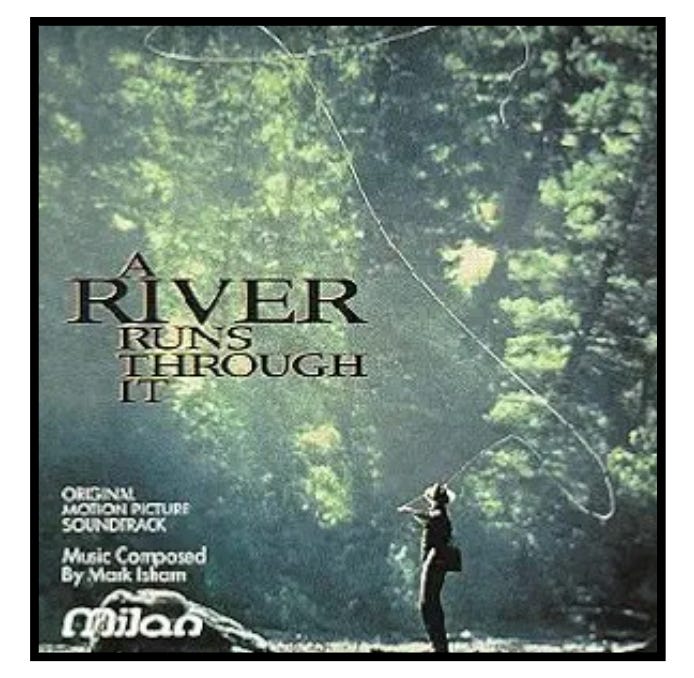
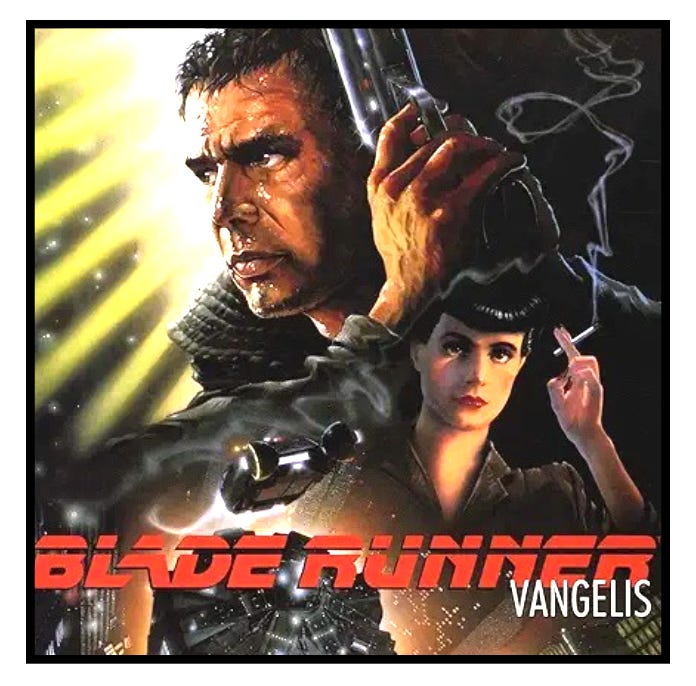

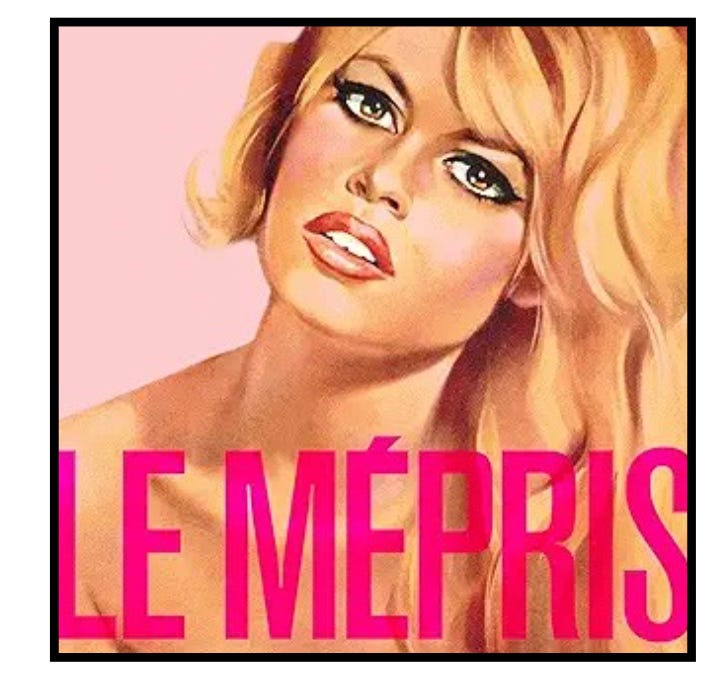

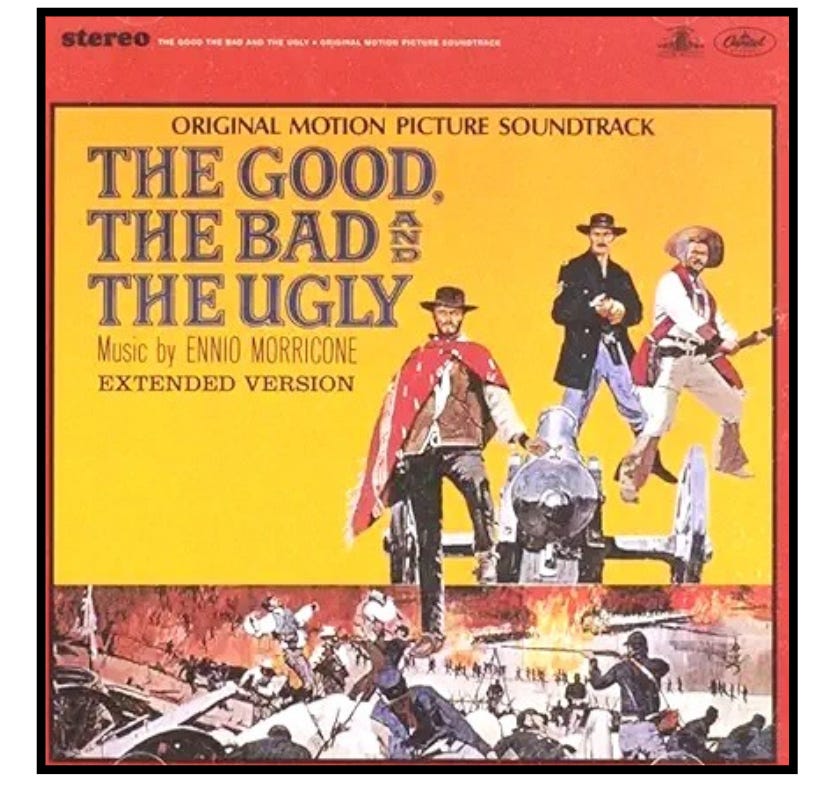







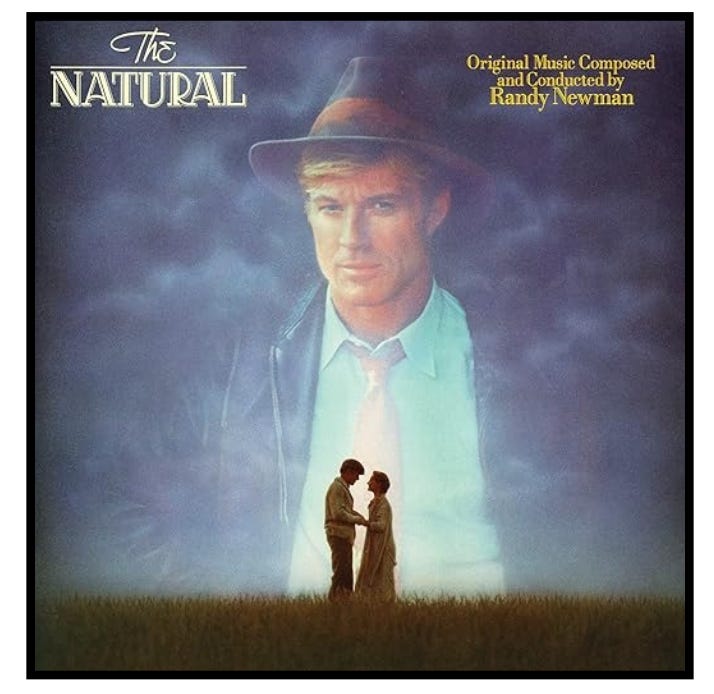




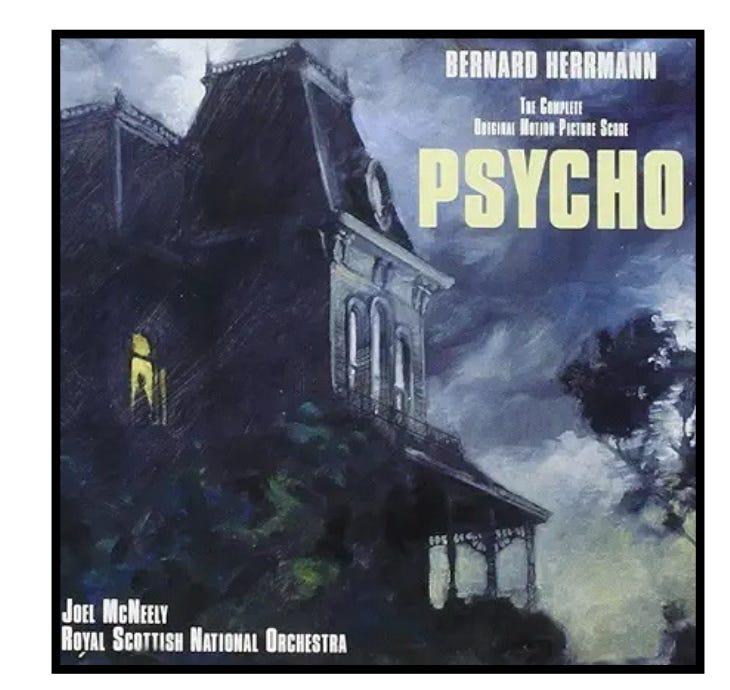



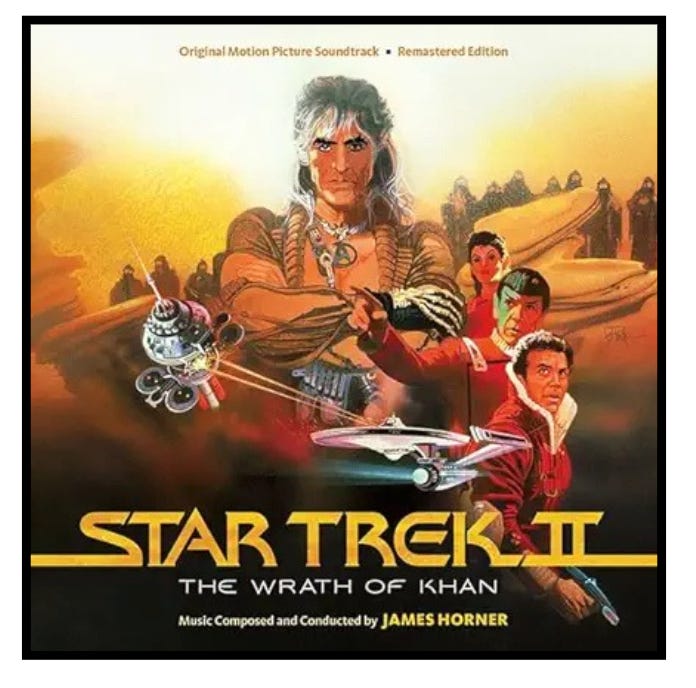


Koyaanisquatsi turned me into a lifelong fan of Philip Glass.
For westerns I will add The Big Country by Jerome Moss.
Fun fact: Quincy Jones' score for Austin Powers was originally from the 1965 film 'The Pawnbroker' - definitely not a comedy.
Betty Blue, and pretty much all Gabriel Yared scores….